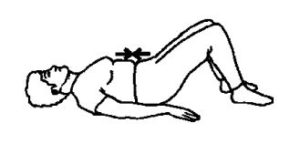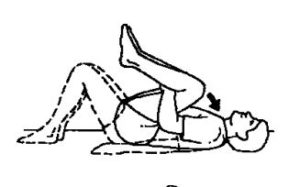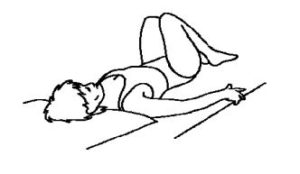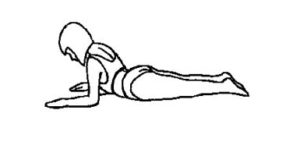Download and print as a PDF (167kB pdf)
On this page
Overview
- Back pain can cause stiffness, muscle spasms and lead to reduced mobility.
- It generally settles with minimal intervention. Pain killers can be taken until the pain settles, to help you keep moving. Don’t just lie in bed. Gentle exercise is good but don’t overdo it.
- Back pain may be caused by bending and lifting incorrectly, prolonged poor posture and changes in activity. Stress and anxiety can also contribute to back pain.
- If your back pain started following an injury or you have fevers or have ever been diagnosed with a cancer, it is important to discuss your symptoms with a doctor.
- Rarely, if you have certain symptoms, you may need to go to hospital. Please read the When should I go to hospital? section of this article.
How long will it take to recover?
- Most low back pain gets better by itself, but there is good evidence that gentle activity speeds up recovery and prevents the pain from becoming persistent.
- The pain usually starts to settle within a few days.
- The majority of simple strains do not cause lasting problems, as the body is very good at healing itself.
What treatments can I use?
Painkillers
- If your doctor has prescribed painkillers, then these should be taken at the recommended dose.
Hot or cold packs
- Gentle heat (a hot water bottle)can help reduce muscle spasm and pain. A cold pack (an ice pack or frozen peas wrapped in a damp towel)can also provide short-term pain relief. Use whichever pack you find most helpful. Apply to the sore area for up to 15 minutes, every few hours.
Relaxation
- Learning to relax your muscles can be useful if your back pain is worsened by stress and anxiety.
Massage
- Gentle soft tissue massage around the lower back may help relaxation and reduce pain.
- Simple exercises can be performed to help restore the movement in your back, preventing stiffness.
- Getting stiff muscles and joints moving is often uncomfortable to start with but becomes much easier as you regain flexibility.
Exercises for your back
Lying on your back with your knees bent
1. Tilt your pelvis forwards and backwards.

2. Bring your knees in towards your chest.

3. Gently roll your knees from side to side.

4. Lying on your front, rest on your forearms gently arching your back.

Please note
Perform each exercise gently and slowly, only moving as far as feels comfortable. Practice each exercise up to 10 times, two or three times per day. If your pain increases significantly stop the exercises and consult your GP or physiotherapist before continuing.
General advice
- Don’t have prolonged bed rest. Your back will get stiff and muscles will get weak. You may lose fitness and feel worse in the long run.
- Don’t rely on painkillers alone: use gentle heat, relaxation and exercise to reduce pain.
- Do not rest for long periods at a time as this will lead to stiffness and weakness and prolong your recovery.
- Keep active. Maintain your normal daily activities, pacing them throughout the day to avoid further flare ups.
When should I go to hospital?
Urgently visit your Emergency Department if your back pain is associated with any of the following symptoms:
- Sudden or recent difficulty emptying or controlling your bladder or bowels (especially incontinence).
- Numbness around your bottom or genital area.
- New leg weakness or inability to walk.
- Shooting pain down both legs.
- Recent significant trauma affecting your back.
- Fever and chills.
General support
• For general medical advice please use the NHS website, the NHS 111 service, walk-in-centres, or your GP.
• NHS website provides online health information and guidance.
• There are walk-in and urgent treatment services at Brighton Station, Crawley Urgent Treatment Centre, Lewes Victoria Hospital, Horsham Minor Injuries Unit and Bognor Regis War Memorial Hospital.
The information in this article is for guidance purposes only and is in no way intended to replace professional clinical advice by a qualified practitioner.